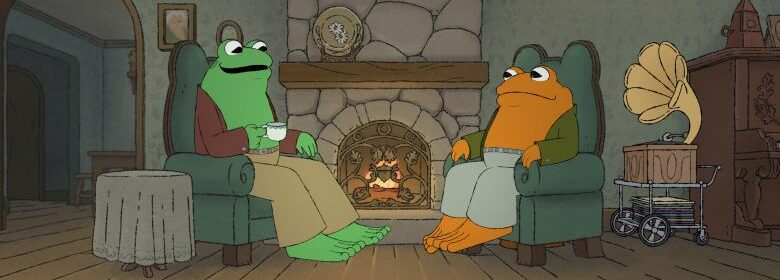How Apple TV+s Animated Frog and Toad Series Retains and Expands the Original Books Charms

If you grew up reading Arnold Lobel’s books or have kids you’ve shared the award-winning adventures with, Apple TV+’s “Frog and Toad” animated series serves as an extension of the characters you know and love. At least that’s the main goal for showrunner Rob Hoegee, who also loved the books as a child.
“These are iconic characters just begging to be pulled into an animated show,” Hoegee told IndieWire. “My goal was to have a faithful adaptation of the books to preserve the characters as everyone remembers them.”
Like the book series, “Frog and Toad” follows best friends who enjoy the things they have in common while embracing their differences. The voice cast includes Nat Faxon and Kevin Michael Richardson as Frog and Toad, respectively, alongside Ron Funches, Fortune Feimster, Cole Escola and more.
In crafting the show’s look, Hoegee wanted to stay as close to Lobel’s “timeless and classic” illustrations as possible. “I don’t think anyone had any interest or even a fleeting thought of changing that,” he said. “If you were to take the style away from these characters, it would remove a huge aspect of what makes them so special.”
That’s why the animation team of roughly 30 (plus another 60 or so from animation studio Titmouse in Vancouver) hand-drew and painted the series before animating it through a program called Toon Boom Harmony. The result is a similar style to the broken line illustrations originally featured in Lobel’s books.
“It’s sort of a hybrid CG, so the characters are created with rigs and built within a computer program. Then those rigs are manipulated, but what’s different than, say, another CG platform, is you’re able to maintain linework and texture in a way that looks hand-drawn,” Hoegee explains.

One of the benefits of that is the ability to add new characters and details in a matter of hours, versus CG, where artists have to design and model each new element. “You have a little bit more flexibility to change things around,” Hoegee said.
“Since this show takes place outdoors, we were able to vary our backgrounds a lot by having foreground elements, midground elements and background elements we could mix and match. We’re able to take trees and rocks and bushes, landscape elements, and interchange them to create almost an infinite amount of environments.”
The showrunner adds that when you have simple stories (“Frog and Toad” is targeted at early readers), you can dive into a scene and let the subtleties emerge. Some episodes contained as few as 45 to 50 shots, compared to a typical preschool animation series, which Hoegee said could have 60 to 70 shots per episode—maybe more depending on the show.
One of the biggest challenges in adapting “Frog and Toad” in this way for modern audiences, however, is keeping things moving and interesting. “You set up the scene and allow the characters to live within the frame, which is keeping with the books,” Hoegee said. “But you always want to have dynamic visuals, interplay between the characters, movement, action… the subtle camerawork.”
He likens some of those visuals to looking into a diorama, where you’ve got a limited perspective and sense of parallax and layering with characters that aren’t created to human scale. “It feels like a world you’re peering into,” he explains. “It has this rich, layered, interesting feel like you’re in your backyard peering through blades of grass, and a dandelion might be the size of a tree. A rock might be a mountain.”
“Frog & Toad”
Apple TV+
He adds that when kids are engaged with characters and a story, they don’t need a lot of action and movement to be sucked in. What you do need, and what he believes “Frog and Toad” has, are all the elements coming together: the visuals, the voice acting and the music, which in this case has an old-time, early jazz, bluegrass feel to it.
“For someone who isn’t familiar with ‘Frog and Toad,’ they will get the same experience that so many people got when reading these books for the first time or the 100th time,” he said. “Everything that’s lovable about these characters in the books is there on the screen. So if the success of the books is any indication, the enjoyment the audience will get from the show will be equal to that.”
Source: Read Full Article
